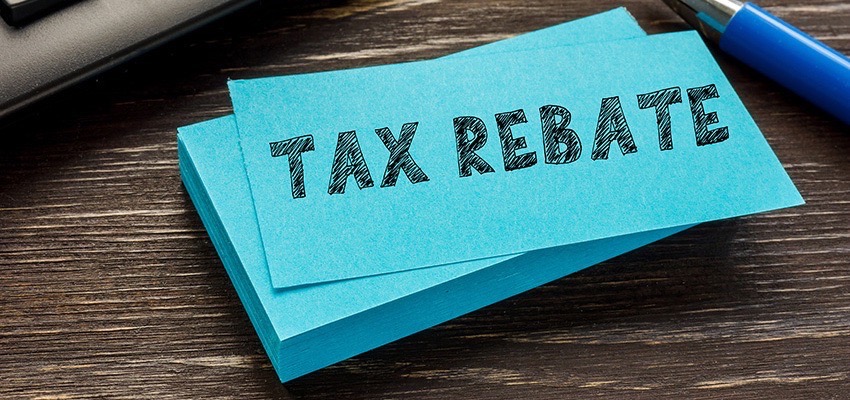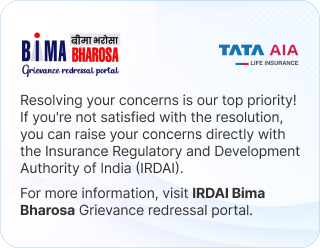A responsible taxpayer should understand the nuances of income tax* and the meaning of tax rebates and refunds. One must obtain this rudimentary knowledge to chart out tax saving paths and devise effective tax planning.
Whether you fill your tax* returns yourself or take the help of a tax expert, you must be aware of your tax liability. Often, people end up paying more taxes than they are required to. What could be saved by a little tax planning goes straight to the income tax department. The primary reason for this is tax ignorance.
In particular, many taxpayers do not even have a sound understanding of tax rebates and tax refunds. These two terms are widely used interchangeably but are not the same. Rebates and refunds lower your tax liability, but the eligibility for availing of rebates and refunds is different.
If you also find these terms confusing, read this blog to know the difference between tax rebates and tax refund.

What is Tax Rebate?
A tax rebate is simply a claim reimbursement on taxable income. Every resident taxpayer is entitled to this rebate until a particular annual income (₹5,00,000). As per section 87A of the Income Tax Act, a taxpayer will get a flat rebate of ₹12,500 on their taxable income of up to ₹5,00,000 in a financial year.
After this income slab, you will have to pay taxes as per applicable tax slabs, but you can also benefit from some deductions.
How to Get a Tax Rebate?
Getting a tax rebate is a straightforward process. If you are an Indian resident earning ₹5 lakhs per annum, you can get a tax rebate of ₹12,500 in the old regime. For individuals filing tax under the new tax regime, they will get ₹25,000 rebate on tax up to an income of ₹7 lakhs in a financial year.
What is Tax Refund?
As the name suggests, a tax refund means a taxpayer has paid more taxes than he was liable to, and therefore, the government will refund the excess amount.
Salaried employees often pay TDS or Tax Deducted at Source. It deducts the taxes before paying salaries to the employee. Now, suppose a taxpayer is eligible for several tax rebates which bring down his tax liability. At the end of the fiscal year, if the accumulated TDS is more than the taxpayer’s tax liability, he or she will get back the extra taxes paid over the year. This is called a tax refund.
To get a tax refund, the assessee must file for a return on the income tax portal. You will be glad to know that if the refund is due for a long time, it is paid with interest.
How to Get a Tax Refund?
To get a tax refund, you need to file a tax return online on the income tax portal. All of your details will be automatically updated on your portal, and once you submit the form and click on ‘validate’, the system will show you the tax refund amount.
As a responsible taxpayer, you should know your tax liability and whether you are entitled to a refund. Therefore, we have listed a few popular tax deductions that will help you figure out how to lower your tax liability. Keep reading.
Know More About Tax Rebate Vs Tax Refund
In the preceding sections, we defined tax rebates and refunds separately. It shows that tax rebates and tax refunds both lower the tax burden. However, the fundamental difference between tax rebates and tax refunds is how they function.
Tax rebate lowers your tax liability. For example, an annual income of ₹5,00,000 in India is taxable under the old tax regime. However, if someone earns this amount in a year, that person is not liable for income taxes by virtue of Section 87A of the Income Tax Act. The taxpayer gets a 100% rebate or discount on the net payable tax under this section. That is how a rebate works.
On the other hand, if the person has already paid income tax owing to certain taxes deducted at source (TDS) despite having no tax liability, the government reimburses the amount. When the taxpayer files an IT return at the end of a fiscal year, they get the paid taxes refunded. That is how a tax refund works.
If you want to learn more ways to reduce your tax liability, keep reading this article. We have mentioned tax deductions that will further help you with income tax savings.
Reduce Your Tax Liability Further with Tax Deductions
As we saw above, the tax rebate offered under Section 87A of the Act offers rebates up to a certain tax bracket - ₹5,00,000 for the old tax regime and ₹7,00,000 for the new tax regime. So, for people falling under a higher tax bracket, the government has provisions for tax deductions under various sections of the Act.
In India, tax deduction, like tax rebates, is a mechanism that can help taxpayers reduce their overall tax liability. However, the two work in distinct ways and serve different purposes:
Tax deductions reduce your taxable income, which, in turn, lowers the amount of income on which you have to pay taxes. They are typically available for specific expenses or investments made by the taxpayer, such as contributions to specific savings schemes or investments in certain instruments.
Common deductions in India include deductions under Section 80C, Section 80D and Section 80G of the Income Tax Act of 1961.
For example, if a policyholder with an income of ₹7,00,000 invests in a health insurance policy with a premium of ₹25,000, he can claim a deduction under Section 80D and reduce his taxable income to ₹6,75,000.
Here are some popular sections that provide tax deductions:
Section 80C: Tax deduction of up to ₹1,50,000 on various instruments like PPF, life insurance premiums, ELSS, home loan principal repayment, NSC, etc.
Section 80D: Tax deduction up to ₹1,00,000 for paying health insurance premium for self, spouse and children, and dependant parents.
Section 80E: Interest paid in education loans for a self, spouse, and children whose legal guardian is you can be claimed for a tax deduction.
Section 24b: Tax deductions up to ₹2 lakh on interest paid on loans taken to purchase a home.
Section 80EEA: Tax deduction up to ₹1.5 lakh (over and above Section 24b) on the interest payment of a home loan.
Conclusion
Many people consider tax refunds as bonuses, but this is not a correct interpretation. Tax refunds are the taxpayer’s money that he or she paid in excess tax. Understanding the taxation and the available rebates is crucial for all taxpayers as it can significantly reduce tax burdens.
Further, understanding the tax provisions under the various Sections of the Income Tax Act is essential for all taxpayers to save on taxes and ensure tax compliance in India.











 FOR EXISTING POLICY
FOR EXISTING POLICY 
 FOR NEW POLICY
FOR NEW POLICY 








